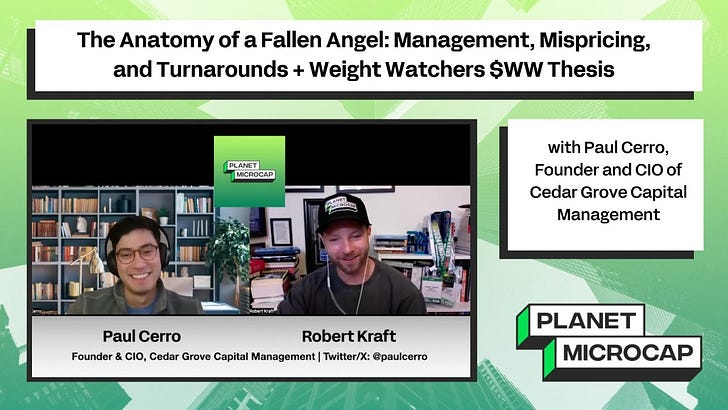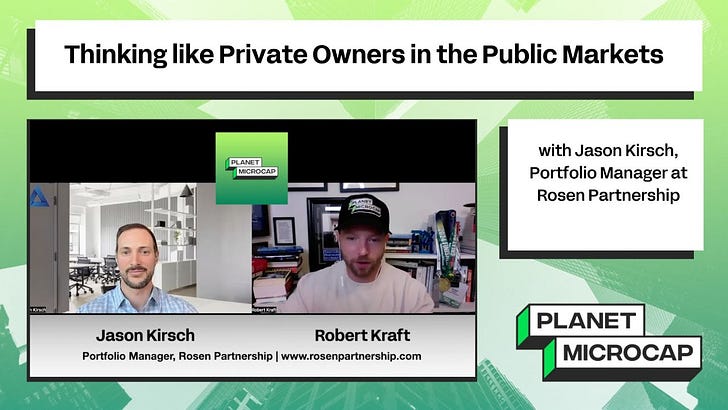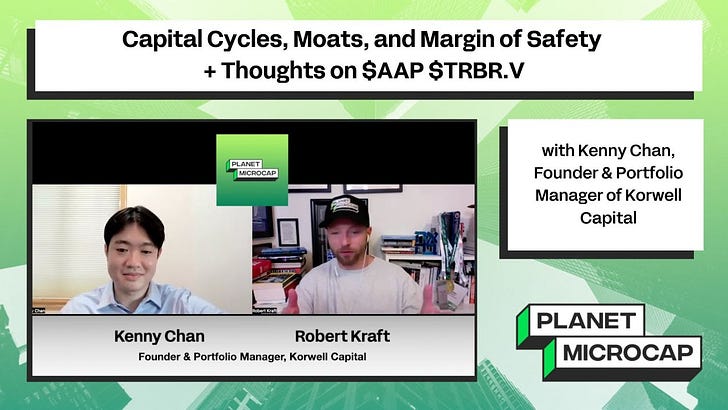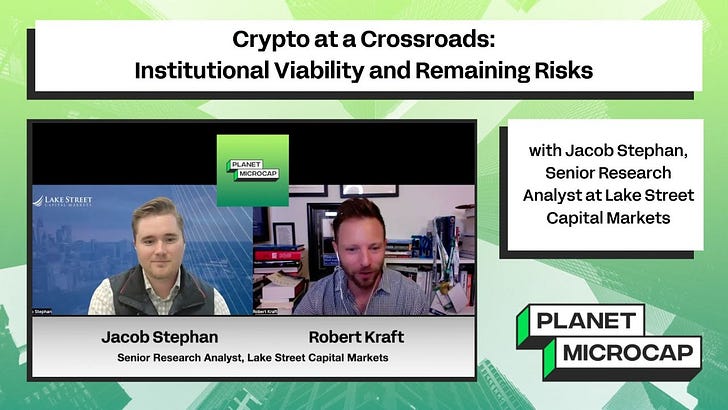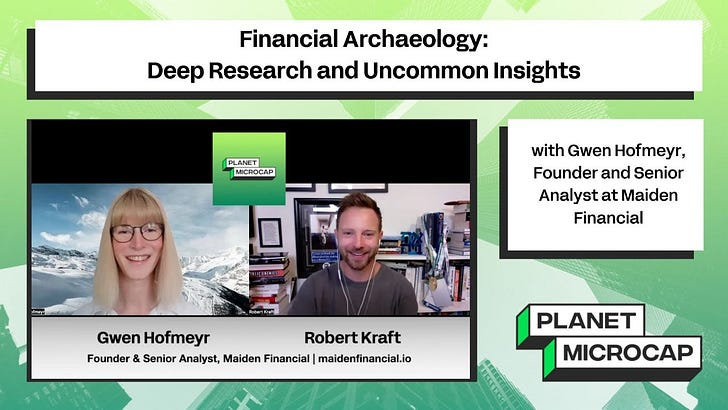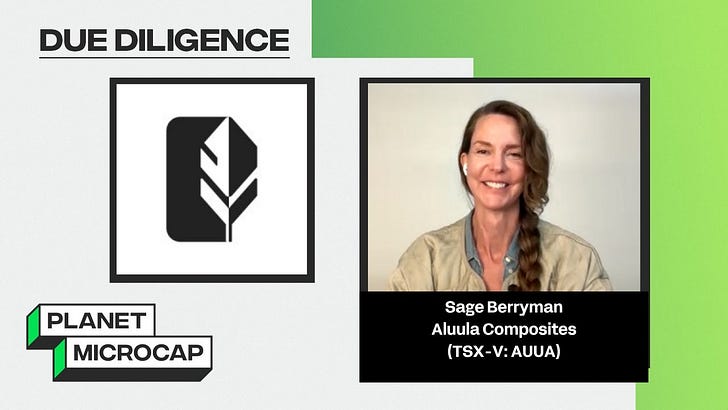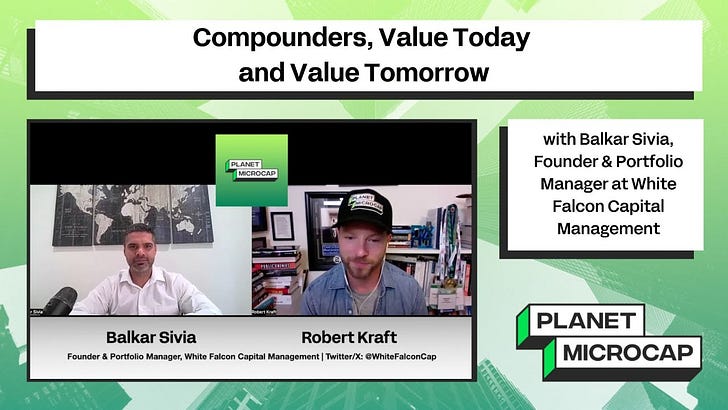My guest on the show today is Jerome, Portfolio Manager at Uzo Capital. Jerome brings a unique lens to public equity investing—shaped by his experience on the equity trading floor at Merrill Lynch during the financial crisis, his global perspective, and a profitable venture in music royalties.
In this episode, we dive into Jerome’s barbell investment approach: pairing stable, cash-generative compounders with higher-risk, venture-style bets in the public markets. He walks us through how he identifies “asymmetric” opportunities—where the upside far outweighs the downside—particularly in companies that are either undiscovered or undergoing transformational change.
Jerome also shares how his music royalty business, which generates steady, recurring cash flow, provides the emotional and financial runway to take bold swings on high-risk, high-reward ideas. He discusses how this foundation enables him to withstand volatility and dig deeper into ideas that others may overlook.
We cover a lot in this conversation—from PLBY, McCoy Global, and Comstock, to his thesis around durable, capital-light growth businesses and the importance of identifying "free call options" within complex situations. Jerome also lays out a thoughtful framework for due diligence and portfolio sizing that helps manage both risk and conviction. And for full disclosure, we discussed a number of companies during today’s podcast. I am not a shareholder in any of them.
For more information about Uzo Capital, please visit: https://uzocapital.substack.com/
Watch on YouTube:
I. Executive Summary
Jerome, portfolio manager at Uzo Capital, shares a deeply personal and analytical look at his investment philosophy, shaped by a formative stint on the Merrill Lynch equity trading floor and the 2008 financial crisis. His strategy blends stable “compounders” with high-upside microcap bets, supported by an uncorrelated income stream from a successful music royalty portfolio. His goal: identify asymmetric risk-reward setups through rigorous due diligence, thematic clarity, and forward-thinking analysis.
“I will very much focus on what this company looks like in two or three years. How much am I paying today—and what is that really worth in the future?”
II. Core Investment Philosophy: Finding Asymmetry
1. Undiscovered Microcaps
Jerome hunts for under-the-radar companies, often microcaps ($50M–$1B), that institutional investors overlook.
These may be newly listed, under-covered, or misunderstood.
He actively attends conferences like Planet MicroCap to meet management teams in person.
“Every single microcap conference I’ve been to, there’s always been a company I wasn’t expecting to be interesting—but was.”
2. Companies Undergoing Structural Change
He targets businesses going through major inflection points—spinouts, recent issues masking long-term strength, or new business model transformations.
Examples: IWG (franchise model), PLBY (royalty growth), McCoy Global (recurring revenue from new tech).
“The business on a forward-looking basis is going to look really good.”
3. High-Margin, Capital-Light Compounders
His favorite hunting ground: businesses with durable, cash-rich growth that’s underappreciated by the market.
“All the growth is coming from high margin, high cash conversion... it transforms the financials of the entire company.”
III. Investment Buckets: Barbell Strategy
1. Core Compounders
Stable, high-quality businesses with predictable growth and free cash flow.
High conviction positions
Easier to size large initially
2. High-Risk, High-Reward ("Listed VC")
Small, speculative bets with massive upside potential but elevated risk.
Often unprofitable today but have strong unit economics or disruptive potential
Includes warrants, litigation plays, and “free call options” embedded in multi-part businesses
“If there’s a 30% chance you make 30x your money—that’s a great payoff. I’ll take that every day.”
3. Emotional Stability via Royalties
His passive music royalty income cushions volatility, enabling unemotional decision-making in public markets.
“It takes out the emotional swings… you can be a lot more relaxed about the volatility.”
IV. Due Diligence and Risk Framework
Deep Research & Stress Testing
Every position starts with detailed analysis and scenario planning.
“You’ve got to understand it well enough to poke holes in it.”
Framing Risk-Reward
He seeks setups where the downside is covered by hard assets or core businesses, and upside is a “free option.”
E.g., Comstock’s land + recycling business covers valuation; Biolum is upside.
Insider & Strategic Activity
Looks for clues from informed parties—insider buys, strategic investors, or partners making above-market investments.
“What are the signals you’re getting?”
Team & Capital Allocation
Judges management’s thought process, discipline, and alignment.
“Do I trust that capital is going to be managed appropriately?”
Position Sizing
Risky positions are sized small to maintain psychological stamina through volatility.
“If it halves, are you going to be emotional—or are you sized for staying power?”
V. Global Focus and the Music Royalty Engine
Global Exposure
While based in the U.S., Jerome allocates globally across developed markets (Europe, Canada, Australia, Israel).
“I’m not looking to get caught off guard in an emerging market curveball.”
Music Royalties: Passive, Scalable Income
He buys royalty rights directly from creators—like songwriters or producers—not labels.
Compares it to real estate: stable, recurring income; passive once acquired.
Uses industry giants (Sony, Universal) for administration and monetization.
“Almost like buying real estate… but there’s no Rightmove or Zillow.”
Lessons Learned
Mistakes include underestimating regulatory risks (copyright law, royalty rates), overpaying for unsustainable spikes (posthumous artist spikes), or misjudging rights structures.
Personal wins: early Misfits publishing deal and an overlooked 1980s Bollywood catalog.
“I bought the rights without realizing how big culturally it was. That was a nice surprise.”
VI. Conclusion: A Flexible, Thoughtful Framework
Jerome’s process blends deep skepticism, sharp pattern recognition, and creative structuring. His “barbell” approach allows him to compound steadily with quality while swinging for the fences with optionality-driven microcaps. Anchored by personal cash flow from music IP, he takes a dispassionate and opportunistic lens to the market.
“There’s always something drastically changing or misunderstood—if you’re willing to look hard enough.”
Planet MicroCap Podcast is on YouTube! All archived episodes and each new episode will be posted on the Planet MicroCap YouTube channel. I’ve provided the link in the description if you’d like to subscribe. You’ll also get the chance to watch all our Video Interviews with management teams, educational panels from the conference, as well as expert commentary from some familiar guests on the podcast.
Subscribe here: http://bit.ly/1Q5Yfym
Click here to rate and review the Planet MicroCap Podcast
The Planet MicroCap Podcast is brought to you by SNN Incorporated, The Official MicroCap News Source, and the Planet MicroCap Review Magazine, the leading magazine in the MicroCap market.
You can Follow the Planet MicroCap Podcast on Twitter @BobbyKKraft




